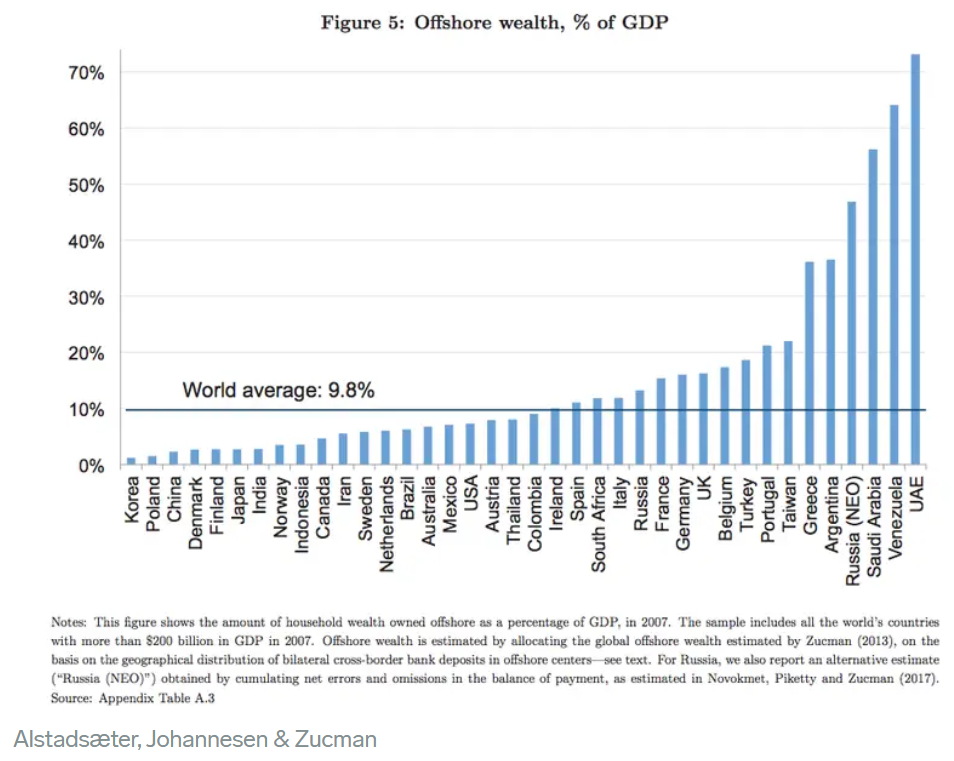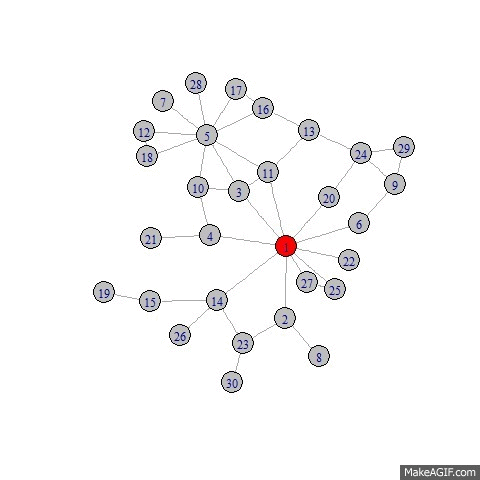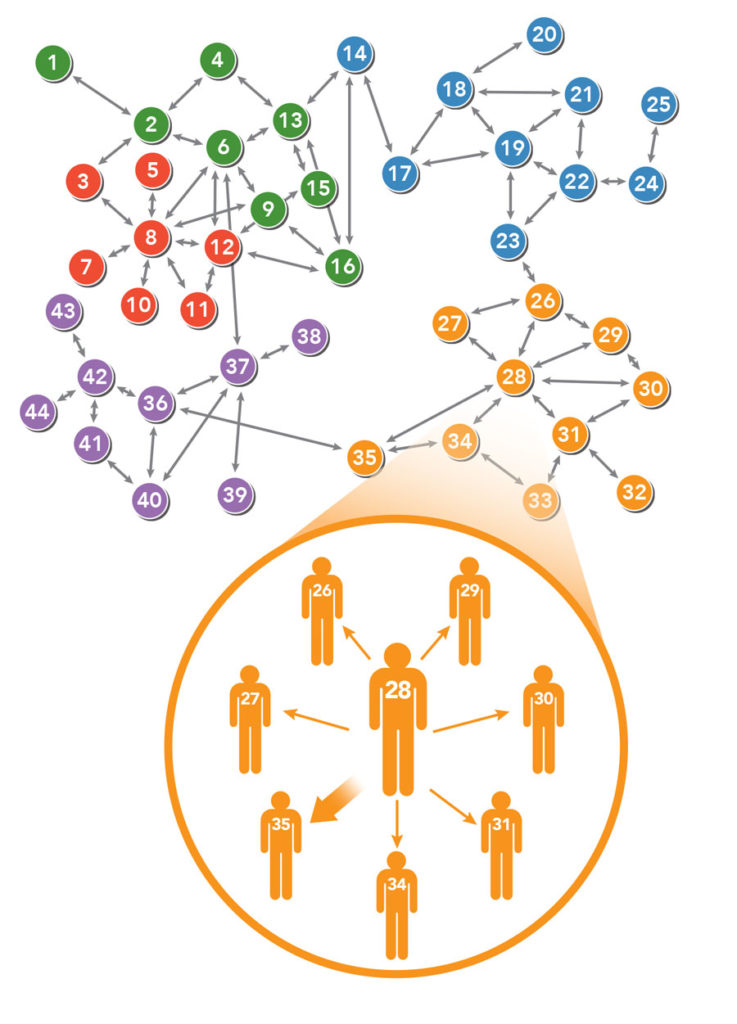
It is not hard to infer from the title of Pasquinelli’s article “Google’s PageRank Algorithm: A Diagram of the Cognitive Capitalism and the Rentier of the Common Intellect”, that he views the PageRank algorithm as a structure of Cognitive Capitalism. He explains that by mentioning a link in an article or even clicking on a hyperlink, each individual who uses the search engine contributes their knowledge and opinions to make the machine more intelligent, efficient and beneficial to others. Assuming that the majority of the people using Google have good intentions, we have a “wisdom-of-the-crowds” effect: the more a page is referenced, the more people consider it to be significant, the more value other people will potentially acquire from in it. As an effect, the pages which already have a high score keep growing it at a faster rate, because they are more likely to be visited and referenced in the future than pages with a lower PageRank.
It is quite simple to draw a parallel with how people become billionaires. According to Investopedia, the most common ways people become billionaires are through “inventing, investing, innovating and being an entrepreneur” (or a combination of such).
If we apply PageRank analysis to the dynamics of economic ranking in a capitalist society, we can see that the reason why people become billionaires in the first place is because they have generated something that was deemed valuable by many people who are willing to partake in transactions to acquire benefits from such innovations, as a result of which, the billionaire generates more revenue. “Cognitive Capitalism” also plays a role in placing billionaires in their positions of power: the more people engage in financial transactions with them, contributing to their wealth, the more they demonstrate their trust and approval of the billionaire’s endeavors, the more other people are willing to contribute their trust and resources, giving the billionaire a bigger platform.
As seen in lecture, some certain structures of a network could cause the Basic PageRank algorithm to unfairly accumulate PageRank in a cluster of nodes which have no edges going out, back into the rest of the graph. Although many other nodes could have lots of in-links and be valuable resources, they would end up with 0 PageRank score. This is why the Scaled PageRank algorithm introduces a scaling factor to redistribute the score among all nodes evenly, and this results in a more accurate score for all nodes.
Now imagine we lived in a pure capitalist society where no one paid taxes. We could easily run into the same issue as with the Basic PageRank algorithm, where all the wealth piles up in the wrong places. Therefore, in my opinion, it is unimaginable to live in a purely capitalistic society due to the issues with our socio-economic network structure. There needs to be a well balanced “scaling factor” applied to everyone (for PageRank, a stable scaling factor is considered to be between 80~90%). However, overtaxing would also be wrong. Imagine increasing the scaling factor in PageRank more than necessary: the greater the scaling factor, the more likely people will get the wrong sources mixed in with the right ones each time they search. Wisdom of Crowds is a legitimate phenomenon, from which everyone benefits, so some sense of hierarchy is essential to avoid giving irrelevant resources too much power.

However, the real economic network is not as simple in reality as can be depicted on a graph. I will end this blog with one such fact: according to the Business Insider, “The equivalent of 10% of world GDP is held in tax havens globally”. Above is a graphical representation of how much wealth in some countries is held in offshores to avoid paying taxes in proportion to the country’s GDP, which prevents a fair distribution of wealth in the world. (Taken from BusinessInsider, linked in references)
So, should billionaires be paying more taxes? Coming from a network analysis perspective, my answer to that is they should pay the taxes on all their wealth, including what is held in offshores, so that the wealth distribution would not be so skewed and each economic entity in our social network would have an accurate net worth, proportional to the benefit they bring to society.
References:
Mueller, Annie. “7 Real-Life Ways to Become a Billionaire”. Investopedia, updated Jun 25, 2019. Accessed Nov 12, 2019.
https://www.investopedia.com/financial-edge/0311/7-real-life-ways-to-become-a-billionaire.aspx
Pasquinelli, Matteo. “Google’s PageRank Algorithm: a diagram of cognitive capitalism and the rentier of the common intellect”. Published by Pankov Mar 16, 2010. Accessed Nov 12, 2019.
https://pankov.wordpress.com/2010/03/16/google%E2%80%99s-pagerank-algorithm-a-diagram-of-the-cognitive-capitalism-and-the-rentier-of-the-common-intellect
Nicolaci da Costa, Pedro. “The ultrawealthy have 10% of global GDP stashed in tax havens — and it’s making inequality worse than it appears”. BusinessInsider, Sep 13, 2017. Accessed on Nov 12, 2019.
https://www.businessinsider.com/wealthy-money-offshore-makes-inequality-look-even-worse


